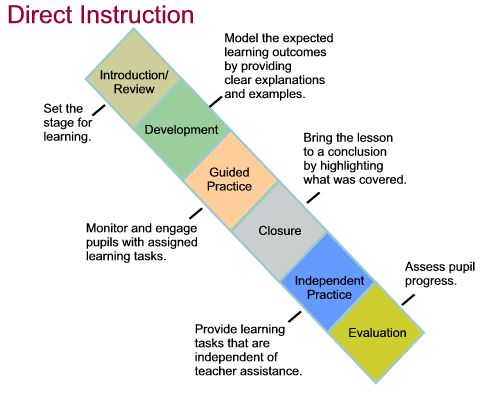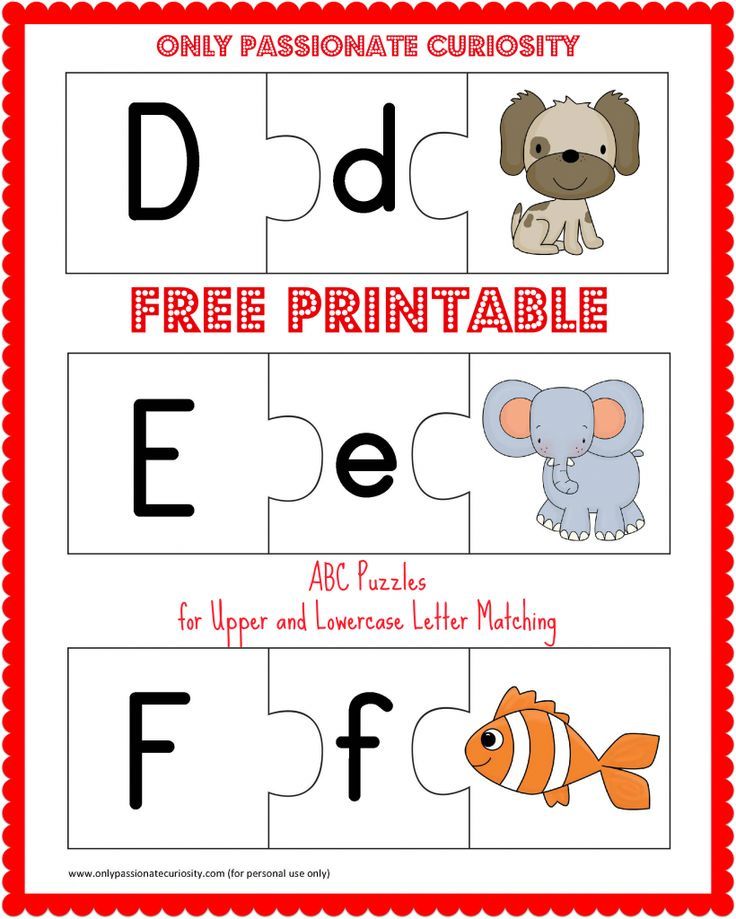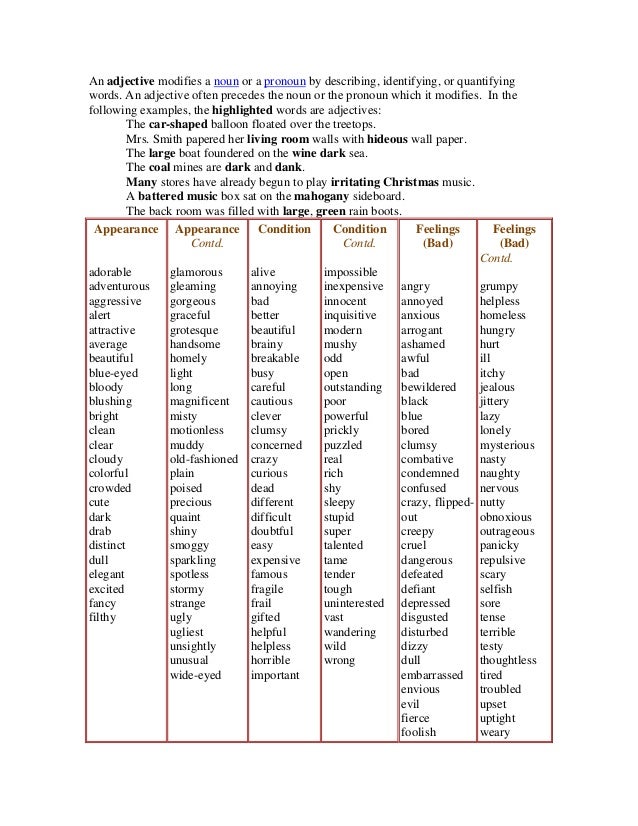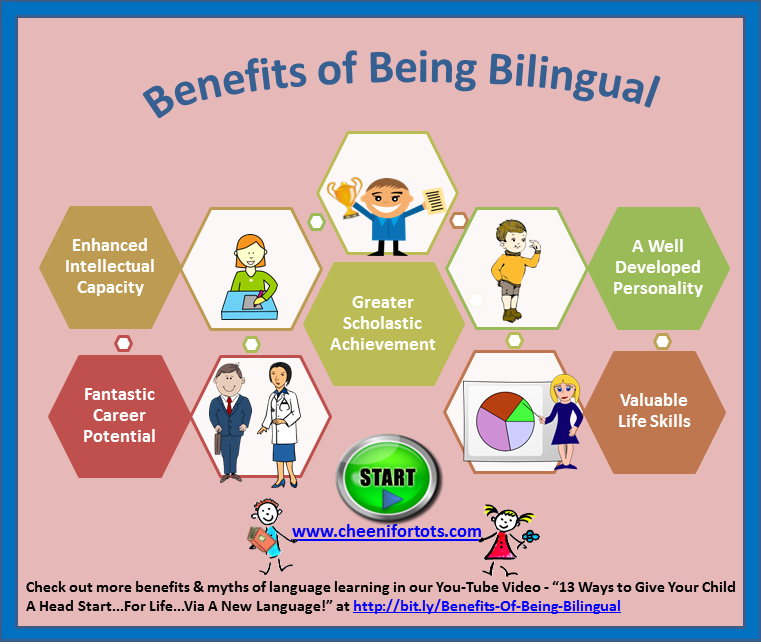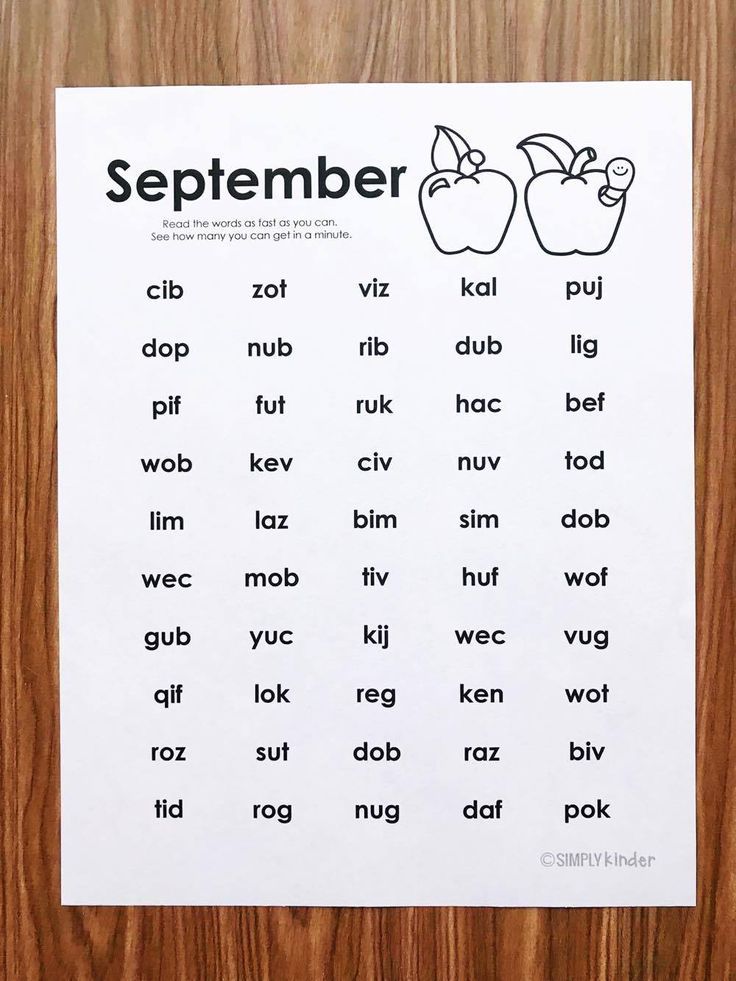Kids showing empathy
3 simple ways to teach kids to have empathy for others
Johnny is five years old. He watches his friend Mark being teased by other kids, and then he sees Mark start to cry. As a parent, or caregiver, what do you hope Johnny will do?
For many adults, the expected response would be that Johnny would show empathy. That is, he would be understanding and sensitive to Mark’s feelings, and show a compassionate response to Mark’s distress. But is it realistic to expect that young children have this capacity?
Signs of empathic concern in children have been documented as young as eight to 10 months of age. Demonstrations of more obvious forms of empathy, such as showing concern when someone is crying, can be seen in toddlers. But like all aspects of development, the quantity and quality of this skill development can vary dramatically from one child to the next.
We do know that when children learn to be empathic early in their development, it can lead to much stronger empathy skills later in life as they become adults who treat others with kindness, respect and understanding. Empathic children can become empathic parents, spouses, co-workers and friends.
Empathy is not a fixed trait; it can be fostered. It can be encouraged and cultivated by empathic siblings, as well as adult caregivers. But empathy does take time to develop.
Parents, teachers and caregivers often ask how they can encourage young children to be more empathic. Here are some tips:
1. Model how to value feelingsFirst, whenever possible, show warmth and empathy towards children.
Children are watching others to learn appropriate ways of behaving and interacting, and are known to be influenced by the behaviours they see around them. You can be a good role model by acknowledging and valuing others’ feelings, and showing understanding and sympathy when someone is sad, upset, distressed, frustrated or in need of help.
When children show negative emotions, acknowledge how they feel. Provide nurturing until they signal they are OK to move onto something else.
Young children sometimes need help understanding what they are feeling, so label the emotion for them. For example, if they are crying, say: “You seem upset. How can I help?”
2. Connect feelings, thoughts and behavioursSecond, when talking about feelings, connect behaviours with the feelings for children so that they understand cause and effect.
For example: “Max is feeling sad because Oliver took his toy. What might help Max feel better?”
Teaching kids about cause and effect can also be done through stories, play-acting or reading books. Talk to children about the thoughts, feelings and behaviours of the characters. What might the characters do next?
Connect these scenarios with the child’s own experiences. For example, if the character is sad because she misses her parents, connect that feeling to a time the child also expressed sadness for something similar. This helps the child more clearly understand the connection between feelings, thoughts and behaviours.
For older children (aged five and up), ask them to step into the mind, or take the perspective, of another child or adult: “How do you think they are feeling? Why might they be upset? What could we do to help?”
3. Build a ‘climate’ of empathyThird, as a family, or as a classroom, put a focus on working together to build a “climate” that encourages children to be empathic and understanding with their family and friends.
If your child, or a child in your classroom, is struggling with empathy, try to set them up for success by creating opportunities to be empathic and highlight for them how being kind can benefit everyone involved:
“That was very kind of you to help your sister when she lost her favourite toy. I bet she’ll remember that and want to help you when you need it!”
This will foster more of the same types of behaviour in the future.
Strong empathy skills can set children up for success in life. Parents, teachers, caregivers and even siblings can play a powerful role in helping one another achieve this success.
Sheri Madigan, Assistant professor, Canada Research Chair in Determinants of Child Development, Alberta Children’s Hospital Research Institute, University of Calgary; Jennifer Jenkins, Atkinson Chair of Early Child Development and Education and Director of the Atkinson Centre, University of Toronto, and Marc Jambon, Postdoctoral Fellow in Psychology, University of Toronto. This article was originally published on The Conversation. Read the original article.
This article was originally published online in March 2018.
Stay in touch
Subscribe to Today's Parent's daily newsletter for our best parenting news, tips, essays and recipes.- Email*
- CAPTCHA
- Consent*
Yes, I would like to receive Today's Parent's newsletter.
 I understand I can unsubscribe at any time.**
I understand I can unsubscribe at any time.**
FILED UNDER: Parenting Sharing Siblings
How to Teach Empathy to Kids
You may have heard the saying, “Before you criticize or judge someone, walk a mile in their shoes.” This quote is all about empathy. Empathy is the ability to be aware of the feelings of others and imagine what it might be like to be in their position (or in their shoes).
Empathy is a key ingredient in positive friendships and relationships. It reduces conflict and misunderstandings and leads to helping behavior, kindness, and even greater success in life in general.
And like any skill, empathy can be taught and developed in children. Because cognitive abilities and life experiences develop over time, the most effective strategies to use depend on the child’s age.
Let’s look at some key strategies for teaching empathy to children, as well as some age-by-age ideas and activities.
Before you continue, we thought you might like to download our FREE 21-Day Family Gratitude Challenge. Make this challenge a part of your night routine or family dinner time for the next 21 days (that's how long it takes to build a habit).
4 General Strategies to Teach Empathy at Any AgeModel empathy.
Any time you want to teach a skill to a child, it’s important to model it yourself. This way, the child understands what empathy looks like, sounds like, and feels like. Plus, it’s easier to teach a skill that you’ve already mastered yourself.
Remember to model empathy even when you’re upset with or giving consequences to your child. This reinforces the idea that empathy can and should be used even when you’re feeling disappointed, hurt, or angry. The more children receive empathy, the more likely they are to offer it to others.
Discuss emotions.
Talk openly about emotions rather than dismissing or burying them. Let’s say your child is scared of the dark. Instead of saying, “There’s nothing to be afraid of,” explore the child’s feelings: “Are you scared of the dark? What scares you about the dark?”
Let’s say your child is scared of the dark. Instead of saying, “There’s nothing to be afraid of,” explore the child’s feelings: “Are you scared of the dark? What scares you about the dark?”
If your child doesn’t like another child, don’t immediately say, “That’s wrong,” but ask why the child feels that way. This can lead to a discussion about the other child’s actions and why the child might be acting that way (e.g., They just moved to a new school and are feeling angry because they miss their old school and their friends).
Never punish a child for feeling sad or angry. Make it clear that all emotions are welcome, and learn to manage them in a healthy way through discussion and reflection.
Help out at home, in the community, or globally.
Helping others develop kindness and caring. It can also give children the opportunity to interact with people of diverse backgrounds, ages, and circumstances, making it easier to show empathy for all people.
Read through our list of activities that make a difference at home, in the community, and globally, then pick an activity or two and get started.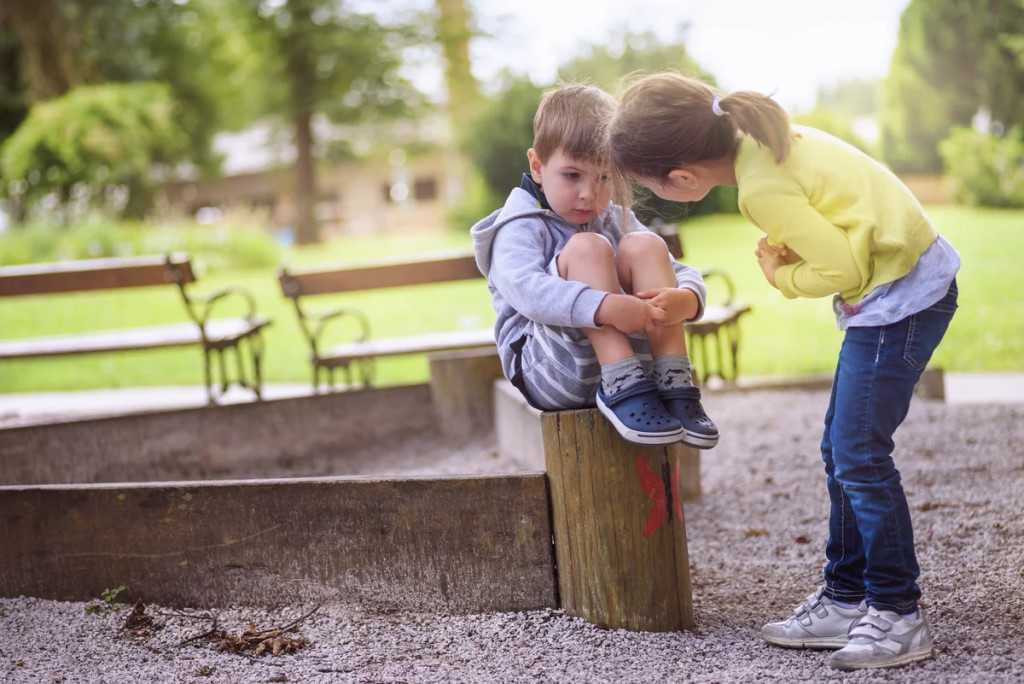
Praise empathetic behavior.
When your child shows empathy for others, praise the behavior. Focusing on and encouraging empathetic behavior encourages more of it in the future.
Make the praise specific: “You brought your sister a Band-Aid for her scraped knee so she could feel better. That was so kind and helpful!”
Age-Specific StrategiesBelow are some age-specific strategies for developing empathy in children. The age ranges below are a general guide; start with a few activities or ideas that you think will resonate with your child. Some activities introduced to younger children may be carried on into the later years.
3-5 YearsDescribe and label.
Help children recognize their emotions and the emotions of others by describing and labeling (e.g., “You seem angry,” or, “Are you feeling sad?”).
You can also promote body awareness, as young children may find it easier to identify emotions based on how it feels in their body.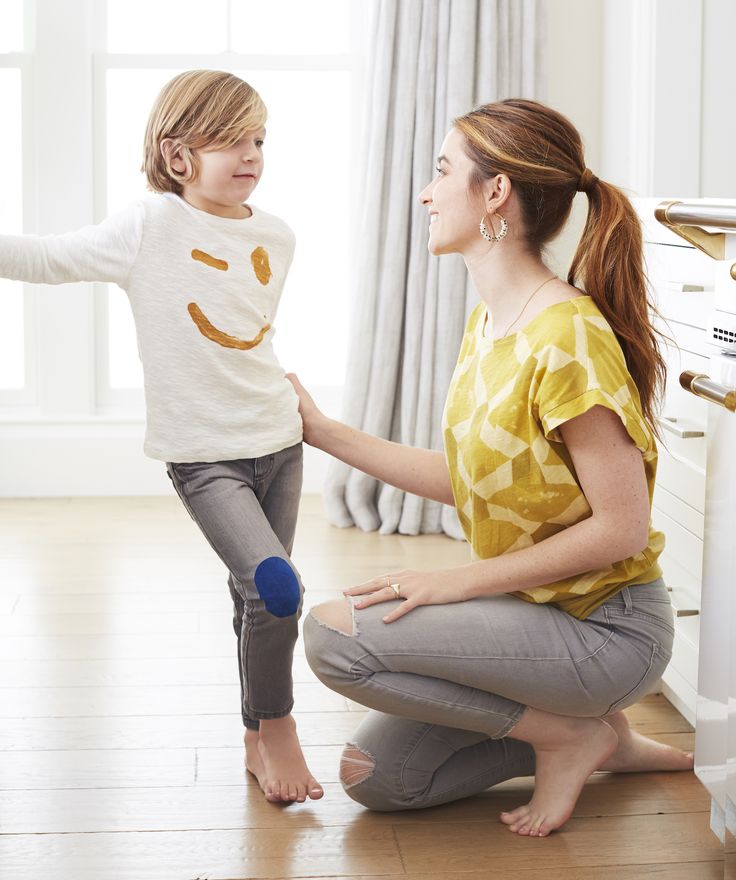
For instance, you might say, “You’re clenching your fists. You stomped your feet. You seem angry.” The more children become aware of their own emotions, the more they’ll recognize and consider the emotions of others.
Read Stories.
As you read stories with your child, ask how the characters in the storybooks might be feeling.
Here’s one example from our list of 29 Books and Activities That Teach Kindness to Children:
"Listening with My Heart" by Gabi Garcia tells the story of Esperanza, who learns to be kind both to others and to herself when things don’t go as planned. You can ask your child questions like:
- How does Esperanza feel at the beginning of the story? How do Esperanza’s feelings change during the story?
- How does Bao feel at the beginning of the story? How do Bao’s feelings change?
- How was Esperanza feeling when she ran off the stage?
- If you could talk to Esperanza after she ran off the stage, what would you say to her?
- How do you think it would feel if it happened to you? What would you like someone to say to you after that experience?
- What does Esperanza do to be a good friend to herself?
- What can you do to be a good friend to yourself?
You can also read about and discuss how it feels when others are mean with the book "Chrysanthemum" by Kevin Henkes, in which Chrysanthemum loves her unique name—until others start to tease her about it.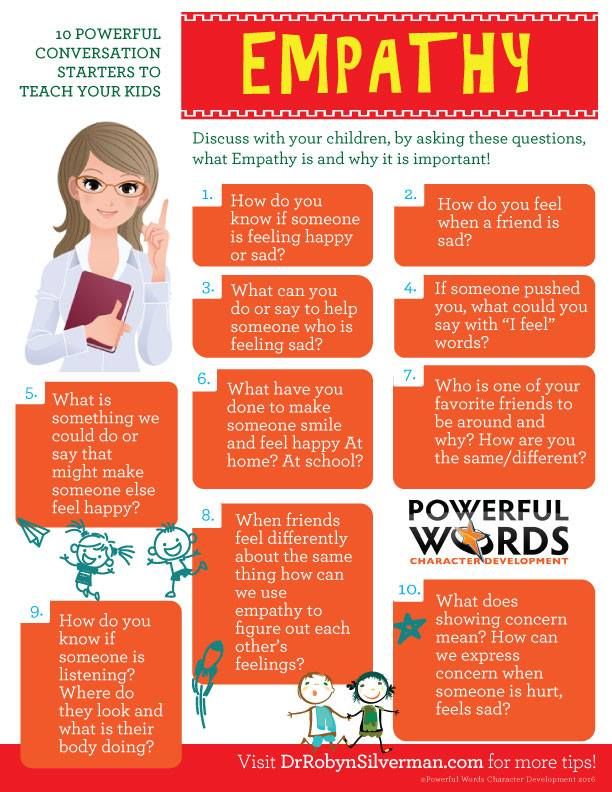
"The Day the Crayons Quit" by Drew Daywalt is another great book for discussing emotions with young children. In this colorful story, Duncan just wants to color. Unfortunately, his crayons are on strike. Beige is always overlooked for Brown, Black only gets to make outlines, Orange and Yellow are in a standoff over which is the true color of the sun, and so on.
As Duncan tries to find a way to make all of his crayons happy, you can talk to children about how the crayons (and Duncan) are feeling. This is also a good way to teach that everyone has different needs, hopes, and dreams, and sometimes it’s hard to find ways for everyone to agree.
You can take a similar approach with just about any story that your child loves!
Make a "We Care Center”.
Dr. Becky Bailey, the founder of the SEL program Conscious Discipline, recommends making a We Care Center to teach children empathy.
The We Care Center can be as simple as a box containing Kleenex, Band-Aids, and a small stuffed animal.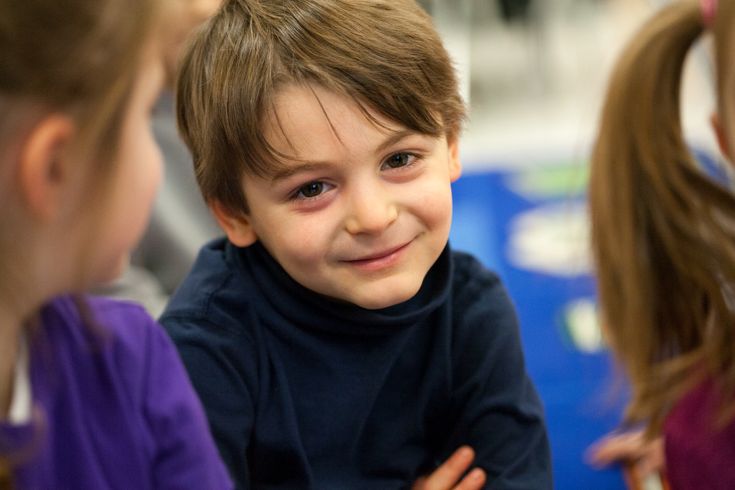 This provides a symbolic way for children to offer empathy to others in distress.
This provides a symbolic way for children to offer empathy to others in distress.
For instance, a young child may notice that Mom seems sad—or even that Mom is sneezing—and offer tissues.
This teaches children to be aware of others and to develop an understanding that our responses and actions can have a positive impact.
We can also model this relationship with statements like, “Our neighbors are sick. Let’s take them some soup to help them feel better!” or, “Your brother scraped his elbow. Let’s help by bringing him a Band-Aid!”
Coach social skills in the moment.
If your child snatches her brother’s toy, ask questions like, “How do you think your brother feels? How do you feel when your brother takes your toys? Look at his face. He seems sad. What could we do instead of snatching your brother’s toy?”
At this point, you could teach a more appropriate response to want a toy, such as asking for a turn, making a trade, or playing with another toy while waiting. It’s much easier for children to learn social skills when they are taught in context.
It’s much easier for children to learn social skills when they are taught in context.
Play emotion charades.
Teaching emotions through play is an important way to develop empathy in children. Games and activities can help children learn the language to express and understand complex feelings.
To play emotion charades, take turns acting out emotions and guessing what feeling is being portrayed. After a player has guessed correctly, you can also discuss the emotion with questions like:
- When do you feel sad?
- What helps you feel better when you’re sad?
- How can we help someone else when they’re feeling sad?
Lisette at the Where Imagination Grows blog suggests a helpful variation on this game. She uses the characters from the movie Inside Out to represent different emotions.
She cuts out images of the characters and glues each character onto an index card. The performer then draws an index card from a bucket and acts out that emotion. The other children hold up the corresponding Inside Out character figurine to guess the emotion.
The other children hold up the corresponding Inside Out character figurine to guess the emotion.
Use pictures.
Visuals are another great way to help children learn. If your child seems to have trouble recognizing and/or labeling emotions, cut out pictures from magazines or print pictures from the Internet that show sad, angry, or happy faces. You can also work up to more complex emotions like scared, embarrassed, disappointed, frustrated, etc.
As you discuss how the people in the pictures are feeling, you can also ask children about times they felt the same way. Provide examples from your own life too, showing that even adults grapple with big emotions and that it’s perfectly normal.
Embrace diversity.
A major component of empathy is respecting others from different backgrounds.
Give your child opportunities to play with children of different races, backgrounds, ability levels, sexes, and so on. You can also read books or watch shows featuring children who are different from your child.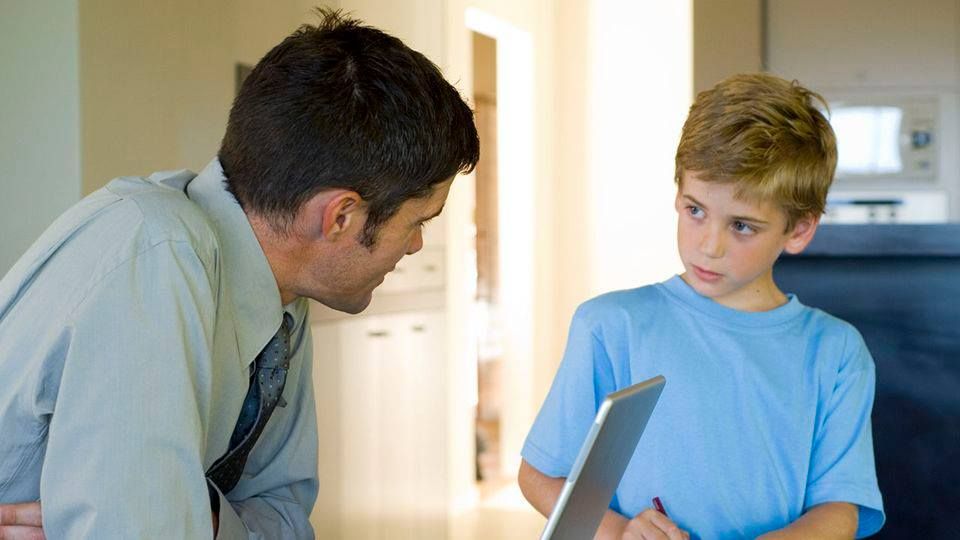 Help children understand and focus on what they have in common with others.
Help children understand and focus on what they have in common with others.
Observe others.
Deepen your child’s understanding of nonverbal cues by playing a game where you observe other people in a busy public place, like a park.
Note the body language of others and guess how they might be feeling. “That child’s head is down, and his shoulders are hunched like this. I think he might be feeling sad. I wonder why he feels that way?”
Teach healthy limits and boundaries.
As your children grow older, it’s important that they also understand empathy doesn’t mean taking on the problems and needs of everyone around them. It doesn’t mean always saying “yes” or dropping everything to help others.
Teach your children to understand and respect their own needs by following these 3 steps.
- Create a plan for how your child can respond in certain scenarios. If, for example, another child gives an unwanted hug, your child can say, “I don’t like that.
 Please don’t touch me.” If a child calls your child a name, your child can say, “My name is ________. Call me that instead.”
Please don’t touch me.” If a child calls your child a name, your child can say, “My name is ________. Call me that instead.” - Create a list of scenarios in which it’s necessary to ask an adult for help, like a child refusing to take no for an answer or any situation that feels dangerous or uncomfortable. In addition, explain that being helpful to others should not involve breaking any rules or doing anything that your child isn’t comfortable with.
- Respect your child’s boundaries. If your child doesn’t like to be tickled or doesn’t want to be picked up and spun around, don’t push the issue. Say, “I understand. I won’t do it again.” This models the way your child should expect others to behave when he or she says “no.”
Don't forget to download our FREE 21-Day Family Gratitude Challenge and make this challenge a part of your family's routine!
7-9 YearsEngage in high-level discussions about book characters.
Read more advanced books and engage in high-level discussions about what the characters think, believe, want, and feel.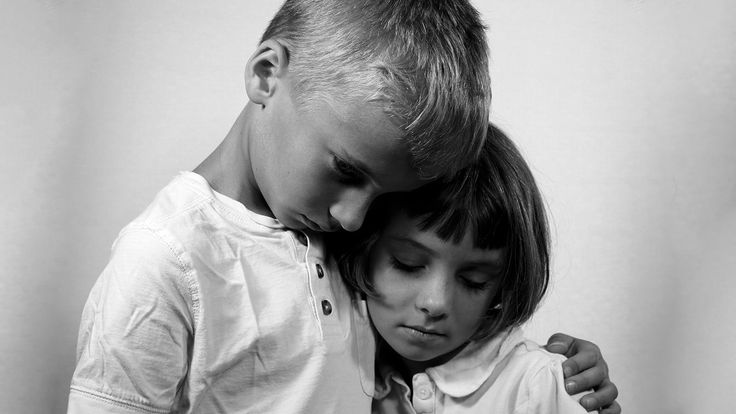 How do we know?
How do we know?
For example, read "The Invisible Boy" by Trudy Ludwig, in which a boy named Brian struggles with feeling like he is invisible. He’s never invited to parties or included in games. When a new student named Justin arrives, Brian is the first to make him feel welcome. When the boys team up on a class project, Brian finds a way to shine. The book teaches children that small acts of kindness can help kids feel included and allow them to flourish.
After reading, ask questions like:
- Why did Brian feel invisible?
- How do you think being “invisible” makes Brian feel?
- How did Brian help Justin feel welcome?
- How did Justin help Brian feel more “visible?”
- Have you ever felt left out or invisible? What would have helped you feel more included or visible?
In one experimental study, 110 school kids (aged seven years) were enrolled in a reading program. Some students were randomly assigned to engage in conversations about the emotional content of the stories they read.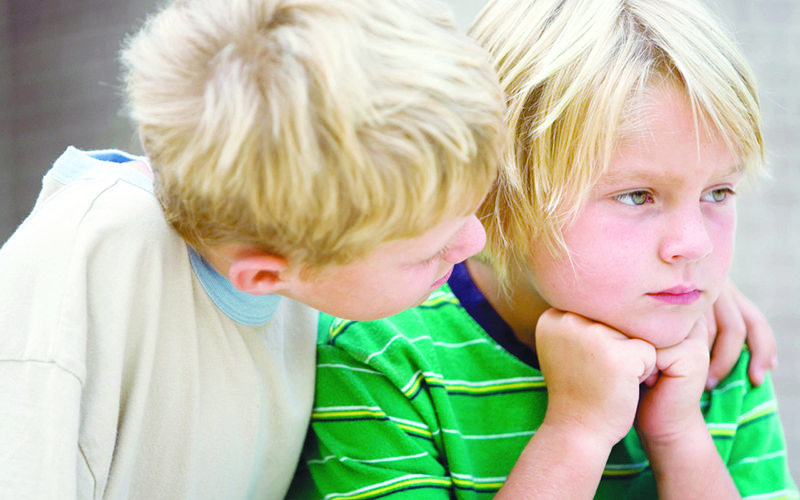 Others were asked only to produce drawings about the stories.
Others were asked only to produce drawings about the stories.
After two months, the kids in the conversation group showed greater advances in emotion comprehension, the theory of mind, and empathy, and the positive outcomes "remained stable for six months."
You can select books to read with your children that are directly related to empathy. Alternatively, notice what your children are reading and engage them in conversations about the characters, their emotions, and what your child might think, feel, or do in similar situations.
Loving-kindness and compassion meditation.
Studies show that as little as two weeks of training in compassion and kindness meditations can lead to changes in brain chemistry that are linked to an increase in positive social behaviors, including empathy. These meditations also lead to increased positive emotions and social connectedness, in addition to improved health.
Loving-kindness meditation involves thinking of loved ones and sending them positive thoughts.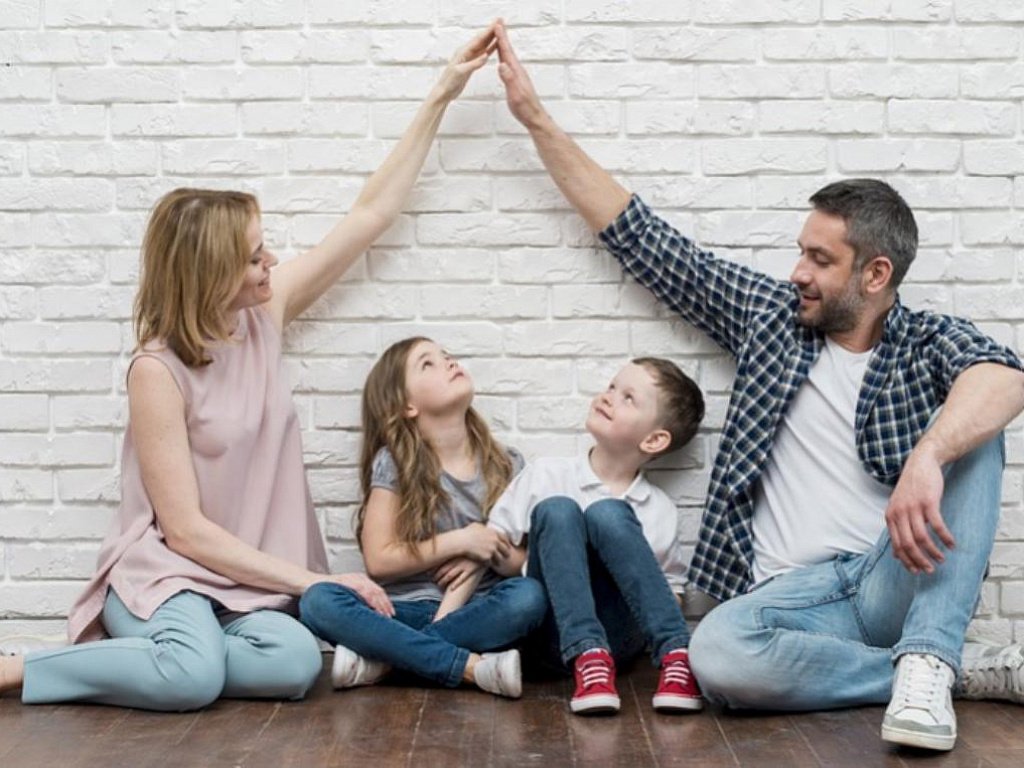 Later, your child can expand her positive thoughts to more neutral people in her life as well.
Later, your child can expand her positive thoughts to more neutral people in her life as well.
The four traditional phrases for this meditation are, “May you feel safe. May you feel happy. May you feel healthy. May you live with ease.” The exact wording you and your child use aren’t important; it’s about generating feelings of kindness and warmth.
With compassion training, children visualize experiences in which they felt sad or upset, then relate to these experiences with warmth and care. They then repeat the exercise with other people, starting with close loved ones, followed by a difficult person, and finally extending compassion to humanity in general.
Engage in cooperative board games or cooperative construction.
Research shows that successful experiences with cooperation encourage us to cooperate more in the future. Collaborating with others can encourage children to build positive relationships and to be open to developing more positive relationships in the future.
These experiences also involve discussions and debate, teaching children to consider other perspectives.
Ideas for cooperative board games or cooperative construction include:
- Play with Legos, working together to build something specific
- Race to the Treasure! (a board game in which children collaborate to build a path and beat an ogre to the treasure)
- Outfoxed! (a cooperative whodunit game)
- Stone Soup (an award-winning cooperative matching game)
- The Secret Door (a mystery board game in which children ages 5+ work together to solve the mystery behind the secret door)
Sign up for acting classes.
If your child is interested, get him involved in theater or acting classes. Stepping into the role of another person is a great way to build empathy, just as playing pretend helps young children develop understanding and compassion for others.
Create empathy maps.
Empathy maps include four sections: Feel, Think, Say, and Do. Choose an emotion, then brainstorm what you might say, think, and do when you feel that way.
Choose an emotion, then brainstorm what you might say, think, and do when you feel that way.
For example: “When I feel worried, I might think I’m making a lot of mistakes or that something bad is going to happen. I say, ‘I’m sorry’ too much or, ‘I can’t do this.’ Sometimes when I’m worried, I do nothing at all. Something helpful that I can do is to take deep breaths and remind myself that everything will be okay.”
If it comes up, you can highlight the fact that what we say or do is sometimes the opposite of what we’re really feeling. You can discuss why that is and how we can relate that to showing empathy and understanding for others.
Ages 12+Discuss current events.
Learn about current events and develop empathy by reading newspapers, news magazines, or watching the news together. Alternatively, you can do this activity when your child mentions a current event to you.
Ask questions like:
- How might the people involved in this situation be feeling?
- How would you feel in a similar situation?
- Is there anything we can do to help?
Encourage your child to choose volunteer work.
Encourage your child to choose volunteer work that he or she is passionate about. As children get older, they can take a more direct role in helping the community or society in general. They may even want to start their own projects or charitable organizations to solve a problem they feel strongly about.
It’s important for kids to explore the world beyond themselves. Our Big Life Journal - Teen Edition includes a section where older kids can write down and map out ways they can make a difference in the world. They can take these passions and turn them into opportunities to serve their communities.
Walk the line.
This activity is perfect for classrooms, summer camps, or other places with a large group of older children/teens. “Walk the Line” was demonstrated in the movie Freedom Writers.
Put a line of tape in the middle of the group, with students facing each side’s line. Read a series of statements. If the statement is true for the student, they go stand on the line.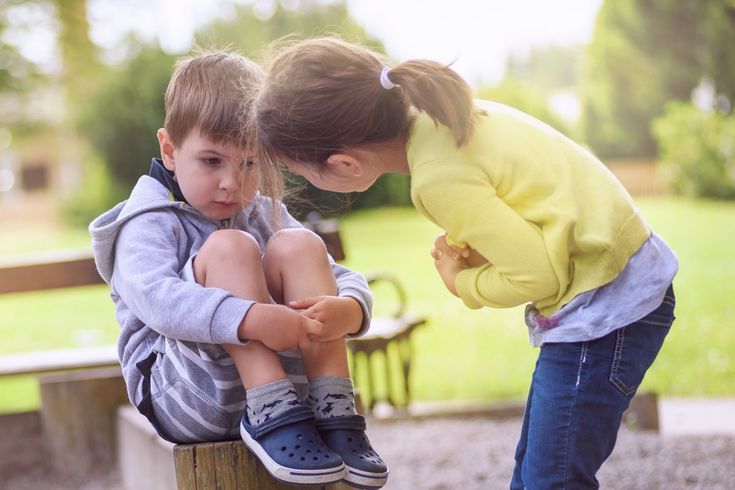
This could include statements like “I’ve lost a family member,” “I’ve been bullied at school,” and so on. Students can also help create the prompts.
The activity shows the struggles they have in common and helps them understand what their peers experience and feel. At the end of the activity, students return to their seats to reflect through writing or discussion.
One option is to have students write a letter (that they can deliver or keep to themselves) to a student who walked to the line on one of the same prompts they moved on, sharing more about this experience or offering words of encouragement.
Empathy can be taught and developed over time, and it will give your child a foundation on which to build sound judgment, success, and positive and healthy relationships throughout their life. Choose one or two activities from this list and get started!
Looking for additional resources to help teach your child about empathy? The Big Life Journal helps children develop strong Social-Emotional Learning (SEL) and growth mindset skills through inspiring stories, colorful illustrations, and engaging guided activities.
Empathy in children: family center experts told how to teach a child to show empathy
Caring for loved ones, attentiveness, kindness and a desire to help are positive qualities that people appreciate in each other. They are formed over the years, but the development of a sense of empathy begins at an early age. Modern parents are often concerned that their children have no empathy for others at all. Should adults encourage the development of empathy in a child, or will the ability to show empathy appear independently of parental intervention? Irina Shirokova, a social rehabilitation specialist at the Crisis Center for Women and Children, spoke about this.
Age of empathy
“I am worried about my daughter's behavior, namely, excessive aggression towards the weak. The daughter can pull the dog's tail when she sees an insect, slam it with her foot, hit her little brother, take away the toy. She is still quite small.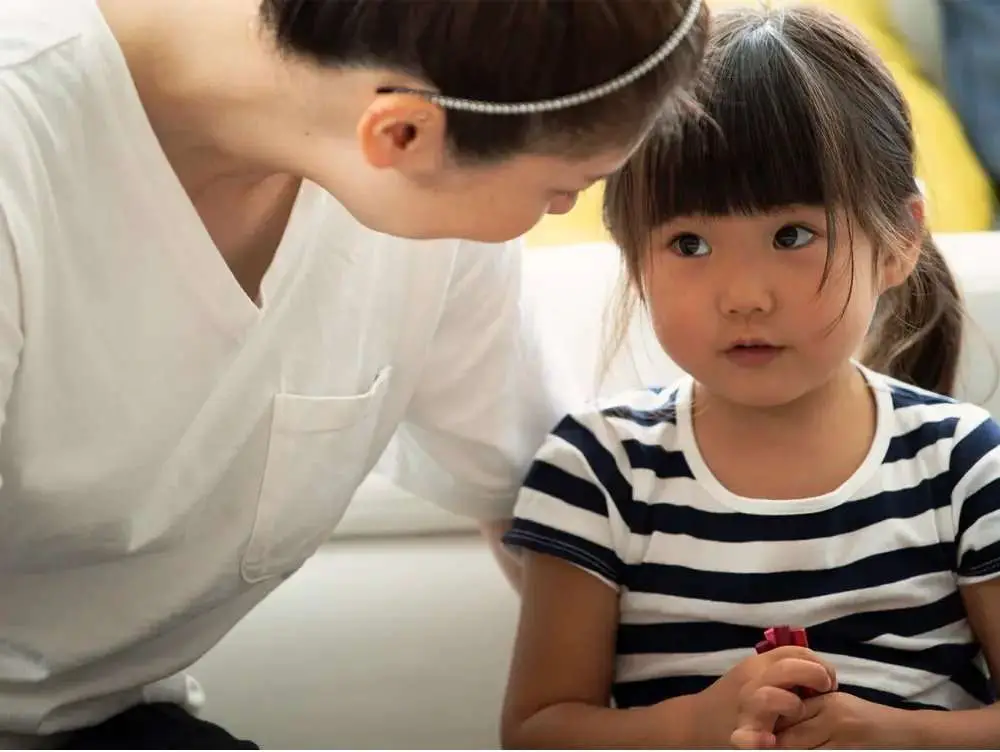 I don't think she understands that she hurts others. How can I develop a sense of empathy in my daughter?” Svetlana, mother of 4-year-old Sophia, asks .
I don't think she understands that she hurts others. How can I develop a sense of empathy in my daughter?” Svetlana, mother of 4-year-old Sophia, asks .
The course of rehabilitation classes for mother and child included practical training in empathy. The girl showed emotions, spoke out her intentions and what she felt at the same time. Mom, together with her daughter, studied the language with which you could express your feelings. During work, discussing sadness and resentment, Sophia said that she had been feeling lonely since the appearance of her younger brother.
“Aggression towards the weak in this case is nothing more than a manifestation of jealousy and a desire to draw attention to oneself. This became a key moment in building further work with mother and daughter "," comments Irina.
Empathy is the ability to recognize, understand the feelings of other people and empathize with them, it is not inherent in a person from birth, but develops in the process of life during communication.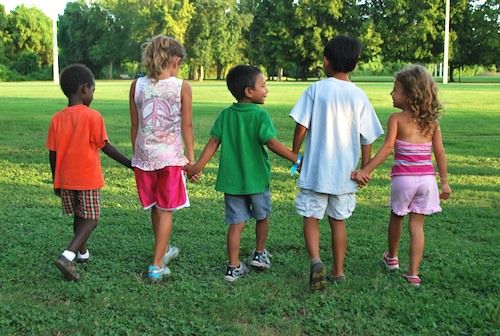 Toddlers are incapable of empathy. As children get older, most of the time they imitate the emotions of their parents.
Toddlers are incapable of empathy. As children get older, most of the time they imitate the emotions of their parents.
“During the period of psychological development and accumulation of emotional experience, it is very important for parents to teach their child to analyze their inner feelings, to understand their emotions and emotional manifestations of other people. This is what underlies the formation of empathy and the ability to sympathize, ”, the specialist explains.
How to develop compassion
When communicating with adults and watching them, a child learns to understand their feelings and emotions. Parents need to pay attention to the comprehensive development of children, including teaching emotional literacy.
- Talk to children
Talking to your child is important from early childhood. About the needs of others, about what feelings and emotions others experience.
“Teach children to express emotions with the words “Now I am upset”, “I am offended”, “I am angry”, express them yourself. Explain that it is quite normal to experience such feelings, ”, the specialist advises.
Explain that it is quite normal to experience such feelings, ”, the specialist advises. - Play
Children love to play. Use this to develop the ability to empathize as well.
Role-playing games provide an opportunity to live the situations of fairy tale characters or real everyday events. A teacher, a doctor, a mother, the protagonist of a cartoon or a movie, a character from a favorite book - by reincarnating, children "live" the corresponding social experience.
Living will focus on the emotions that another person might experience while performing this or that social role. Raising empathy in children through play activities, taking care of pets, reading books and then discussing the feelings of the main characters contribute to the development of empathy and compassion. - Practice on real situations
Notice life situations that require some kind of emotional response from a person. Analyzing a real event, tell the children what emotions people can experience, how they can feel.
“While walking with a child, you saw an ambulance. Tell them that the car is taking someone to the hospital, someone must have become ill. Imagine how the patient’s family members may feel at this moment” , the specialist advises.
Thank the child for his participation in family affairs, encourage compassion for others. And of course, show yourself an example of an adequate response to other people's emotions. - Lead by example
Improve your own empathy skills. “If you don't know how to show emotions, then most likely your son or daughter will also be emotionally restrained. So, even as an adult, learn empathy” , recommends Irina. - Develop your child's inner moral compass
“Explaining to children what is good and what is bad, you give them a kind of moral compass. And in a situation that requires a certain act or choice, they will focus on it. Explain how behavior affects others "," adds Irina.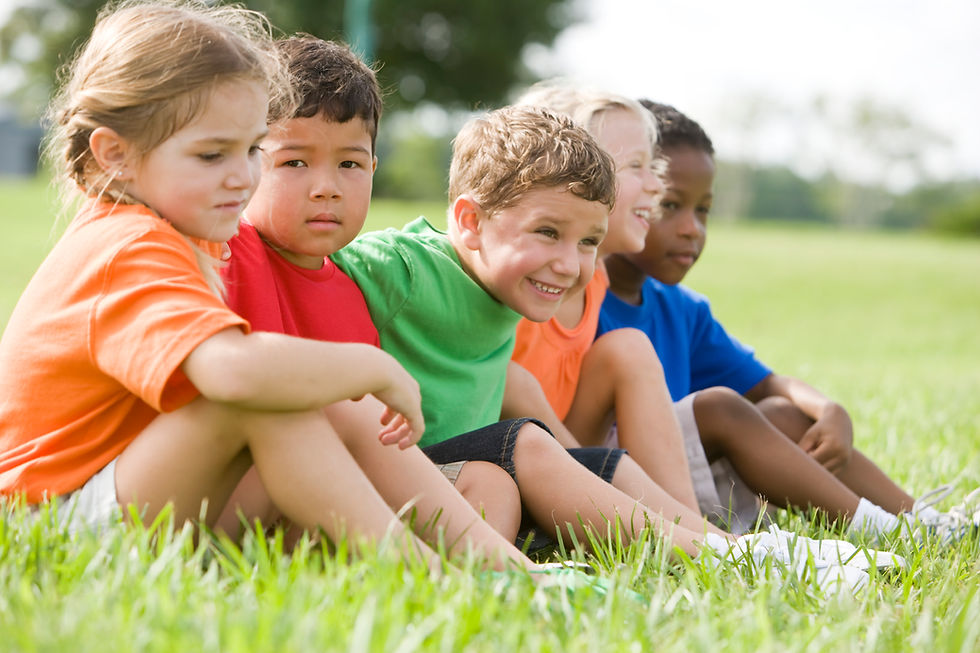
By cultivating a sense of empathy, we lay the foundation for a correct, non-consumer attitude to the surrounding reality. This quality helps to support other people, understand and be able to accept their grievances and pain.
An empathic child can experience such important feelings as pity, grief, condolences. As a rule, people are drawn to such people. I want to communicate with them and build close relationships. Therefore, it is important not only to develop this feature in oneself, but also to help the child "tune in" to the wave of other people and hear them. This happens gradually and can take a long time. But the most important thing is that parents should help.
Where to contact
28 city family and childhood support organizations work for Moscow families: 25 My Family Centers, as well as the Crisis Center for Women and Children, social rehabilitation centers for minors Vozrozhdenie and Altufievo.
Specialists of the centers work to restore relations between children and parents, provide legal and psychological assistance, conduct trainings, develop classes, and much more.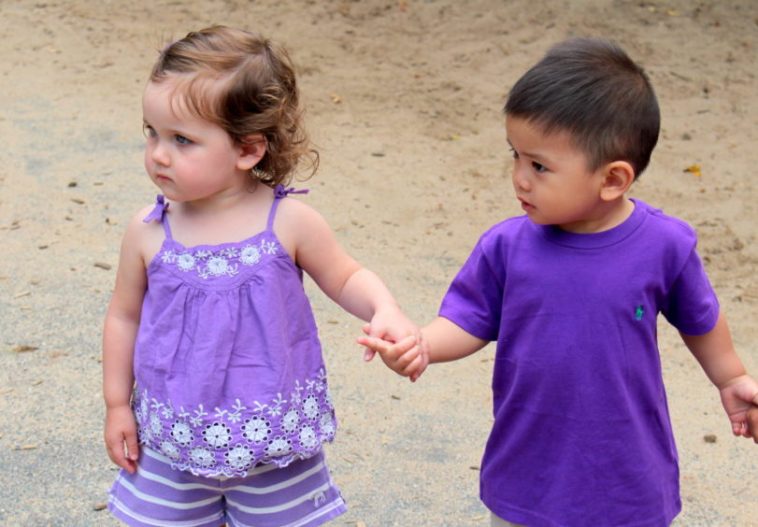 If necessary, targeted assistance is provided: social electronic certificates are issued for products, clothing and household appliances.
If necessary, targeted assistance is provided: social electronic certificates are issued for products, clothing and household appliances.
Detailed information about the services can be found on the page of the My Family Center portal. For the convenience of Muscovites, the "Online Consultations" section has been created on the portal, where each resident of the city can leave a request and they will be contacted within one business day.
Source
Press Service of the Moscow Department of Labor and Social Protection
How to teach children empathy | PSYCHOLOGIES
A few years ago I fell down the stairs in my office. The result is a broken ankle, severe bruises on the face and a bruise under the eye. When they let me go home from the hospital and I crawled into the apartment with difficulty, my daughters were dumbfounded. Their faces showed a mixture of fear and confusion.
Seeing how frightened they were, I tried to reassure them that I was fine, that I had just fallen down the stairs and everything would be fine. I made my way to the couch, followed by their frightened glances. Probably, I immediately fell asleep, and when I woke up, I found that my black eye was sealed, there was a cup of tea on the table and a piece of my favorite pie, and my daughters were sitting next to me.
I made my way to the couch, followed by their frightened glances. Probably, I immediately fell asleep, and when I woke up, I found that my black eye was sealed, there was a cup of tea on the table and a piece of my favorite pie, and my daughters were sitting next to me.
Children have an innate capacity for empathy. They naturally know how to empathize with someone else's pain and sadness - whether it is about other children or pets. As the child grows and develops, a kind of internal struggle begins - empathy "competes" with childish selfishness and undeveloped self-control.
Children can learn to be patient and think of others if their parents encourage them to develop these qualities. Most of us have witnessed the tantrums that children throw when they are tired, hungry, uncomfortable, or when they are not given what they want and not allowed to do what they want. Over time, they learn to better tolerate such dissatisfaction.
It is very important to teach children to be tolerant and sympathetic to others. We, adults, should set an example for them, because children mainly learn through imitation of parents and other loved ones. We learn empathy all our lives, and parents should start talking about it with their child as early as possible. In these conversations, it is important not to avoid "difficult" questions and openly discuss individual differences.
We, adults, should set an example for them, because children mainly learn through imitation of parents and other loved ones. We learn empathy all our lives, and parents should start talking about it with their child as early as possible. In these conversations, it is important not to avoid "difficult" questions and openly discuss individual differences.
Children are very curious and often ask such questions about people, things, about the world that adults are surprised: why did the child even think about this? The way children express their emotions, react to conflict situations and other people's experiences, largely depends on their temperament.
1. Encourage curiosity and a passion for exploring the world.
2. Teach them to care for others and for themselves.
3. Do not cultivate selfishness and spoilage in them, do not encourage rudeness.
4. Show by example how to show sensitivity, care, empathy.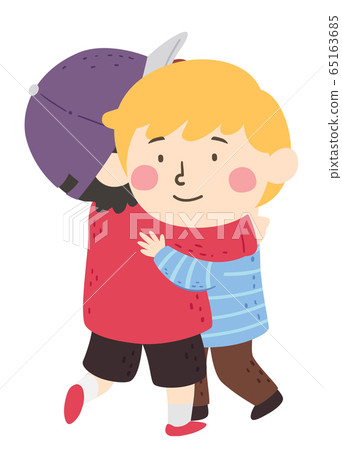
5. Avoid double standards: do not treat certain groups of people differently than others.
6. Learn to treat mistakes correctly: explain that mistakes are inevitable, they must be recognized, accepted responsibility and apologized. If you make a mistake, show the correct reaction by your example.
7. Make sure they follow the rules. Well-established, unchanging limits help children understand how their behavior and transgressions affect others.
8. Pay attention to situations when children show kindness and sympathy, praise them. For example: "I liked that you helped a friend treat the wound when he fell."
9. Encourage your children to help others.
10. Stop them from labeling others and speaking badly about people.
11. Don't let bad behavior go unpunished.
As children grow older, they will begin to understand the importance and value of compassion, especially if they participate in charitable or volunteer activities.

